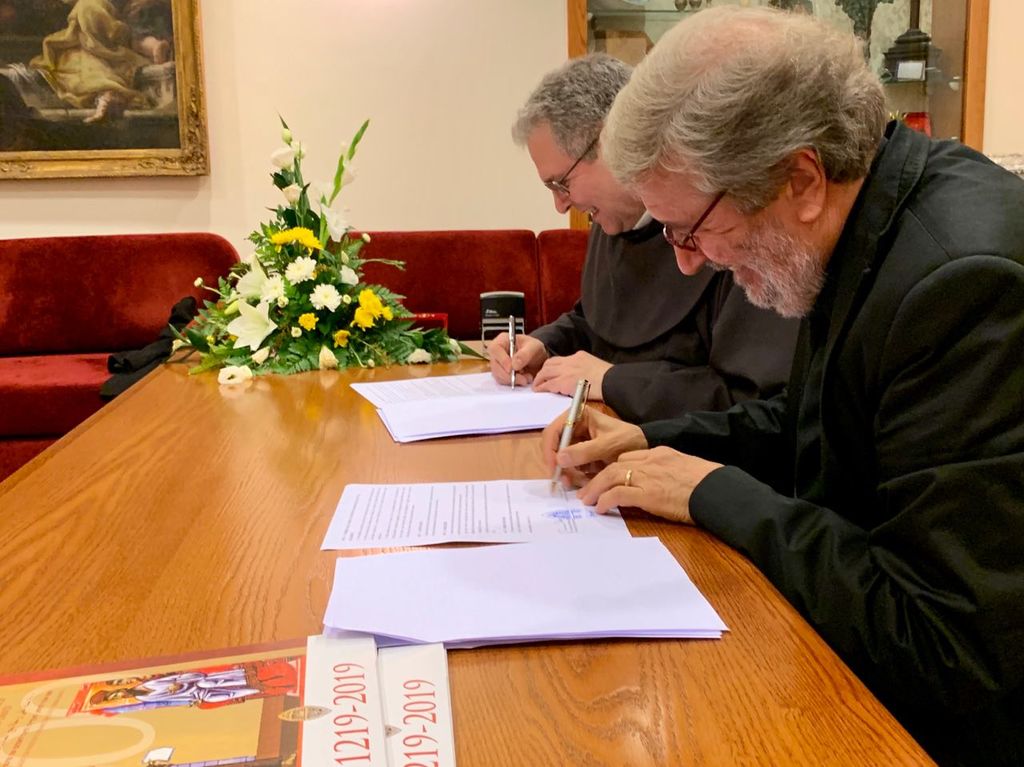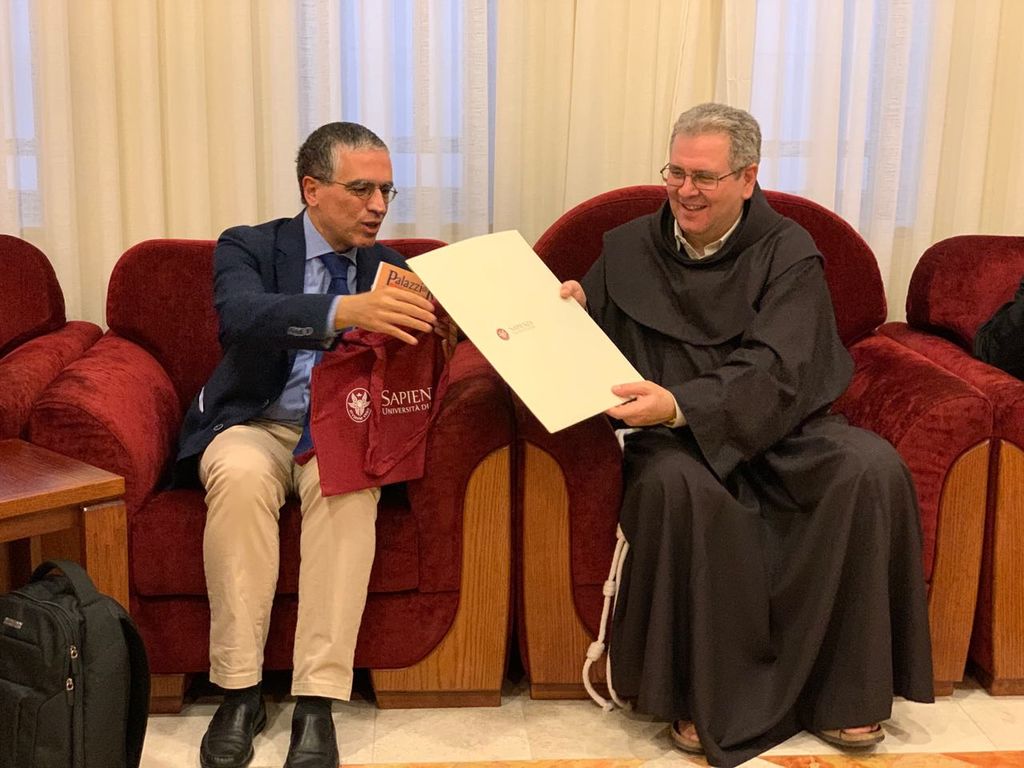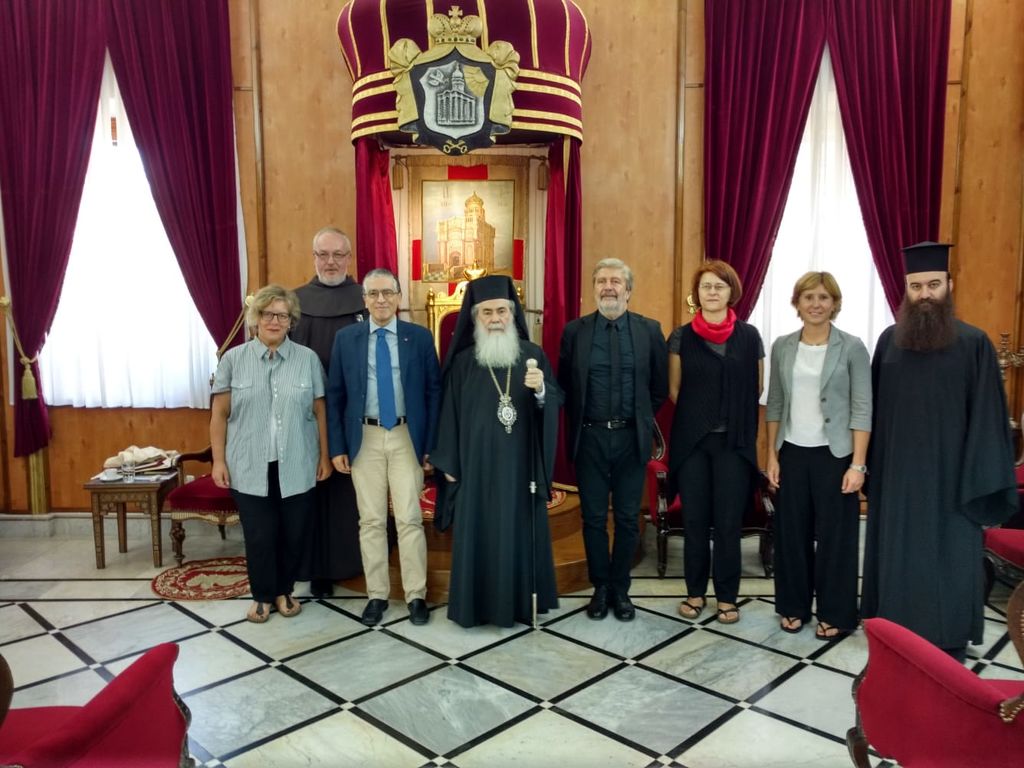
Sapienza to Supervise Restoration of the Church of the Holy Sepulchre
Sapienza will participate in the restoration of the Church of the Holy Sepulchre, the religious heart of Christianity that attracts millions of pilgrims and faithful from around the world. The Custody of the Holy Land, as the Franciscan order that looks after the church is called, appointed the Sapienza Department of Antiquities, directed by Giorgio Piras, to draft the preliminary historical study for the restoration work to the pavement of the Basilica of the Holy Sepulchre in Jerusalem and to supervise, from an archaeological point of view, the restoration operation that will be conducted by the “La Venaria Reale” Foundation for Conservation and Restoration of Cultural Heritage in Turin.
The framework agreement between the Custody of the Holy Land and the “La Venaria Reale” Foundation in collaboration with the Sapienza Department of Antiquities was signed on October 8 at the Custody of the Holy Land.
The signature is part of the agreement amongst the three major Christian Communities composing the Custody of the Holy Land and responsible for the Status Quo inside the Church to commence a second phase of restoration work on the foundation of the aedicula and the pavement of the Holy Sepulchre Basilica. The three communities – the Greek Orthodox Patriarchate, the Custody of the Holy Land and the Armenian Patriarchate – will also fund the work.
“This is a unique, prestigious and immensely important opportunity. Raising the pavement of the rotunda,” explains Giorgio Piras, “will allow us to learn and investigate on new historical-archaeological information from one of the holiest sites for Christians and an immensely important historical-artistic site. New archaeological tools may provide us with the opportunity to better understand how the entire area is structured that has been venerated since ancient times as the site of Christ’s agony and death.”
The project will be completed in two phases. The first will be a propaedeutic study phase to determine the state of the foundations, while the second will address the restoration of the foundations and pavement. The work is scheduled to last for at least two years.





